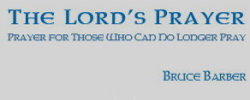December 10 – Thomas Merton
These weekly “People to Commemorate” posts are a kind of calendar for the commemoration of the saints, reproduced here from a Uniting Church Assembly document which can be found in full here. They are intended for copying and pasting into congregational pew sheets on the Sunday closest to the nominated date.
Images (where provided) are of icons by Peter Blackwood; click on the image to download a high resolution copy of the image.
Thomas Merton (1915-1968), person of prayer
The life and writings of the Trappist monk Thomas Merton mark him as one of the great prophetic spiritual writers and teachers of the twentieth century. Merton integrated his life and writing by embracing wholeheartedly contradiction and paradox while expressing his passionate beliefs as a Christian through the voice of the mystic and poet. The greatness of Merton’s legacy lies largely in his capacity to record with searing transparency both his personal spiritual journey and his observations on the spiritual, political, economic, social and environmental issues of his day.
He was above all open to experience and not afraid of it: “Suspended entirely from God’s mercy, I am content for anything to happen” (Journal, November 29, 1952).
Merton was born on 31 January 1915 in Prades, France. Perhaps, classically, his was an unhappy childhood. Merton’s mother died when he was six. His father was an artist who, having moved around constantly, often leaving his son alone, died when Merton was fifteen. For several years Merton lived freely following his desires but also accompanied by personal angst and intense searching. In his mid-twenties, as a student at Columbia University, he experienced a religious conversion and joined the Catholic Church. In 1941 he entered the Trappist Monastery at Gethsemane in Kentucky and spent the rest of his life as a member of that community.
His tragic and premature death from an accidental electrocution on 10 December 1968, while at an international conference of monks in Bangkok, was noted with a front-page obituary in The New York Times. He was 58 years old.
A man who loved silence yet felt compelled to write about silence. A man who craved solitude yet chose to disclose himself to the world and become fully engaged with it in order to discover more about God for himself and for others. A man who shunned public acclaim yet was read and admired by millions. What is the key to this great spiritual teacher? The key is in the remarkable gift of his writing and what it communicates to us. Writing was literally Merton’s life. “To write is to think and to live—even to pray” (Journal, September, 1958).
Merton’s first memoir, The Seven Story Mountain, the story of his journey from self-absorbed youth to novice monk, became a best-seller and has remained in print since 1948. Merton’s personal journals run to seven volumes. He writes in many different genres: devotional and philosophical meditations (e.g. New Seeds of Contemplation and Conjectures of a Guilty Bystander); social criticism and commentary (e.g. The Seeds of Destruction); explorations in Eastern spirituality (e.g. Zen and The Birds of Appetite); biblical studies (e.g. Bread in the Wilderness); and wrote several collections of poetry and essays.
Merton is always evocative and his insights illuminating on the nature of being human and on our ability to perceive God at work in our selves, each other and the world. And so he wrote:
I have the immense joy of being man, a member of a race in which God himself became incarnate. As if the sorrows and stupidities of the human condition could overwhelm me now that I realise what we all are. If only everybody could realise this! But it cannot be explained. There is no way of telling people they are all walking around shining like the sun.
Merton was profoundly interested in the East and especially in how the ways Eastern thought, particularly Buddhism, might illuminate aspects of the Western tradition:
If I can unite in myself, in my own spiritual life, the thought of the East and the West, of the Greek and Latin fathers, I will create in myself a reunion of the divided Church, and from that unity in myself can come the exterior and visible unity of the Church. For, if we want to bring together East and West, we cannot do it by imposing one upon the other. We must contain both in ourselves and transcend them both in Christ (28 April 1957).
Merton was a radical inclusivist and thoroughly post-modern. Yet ultimately, his is the voice of the mystic and poet: “By the reading of Scripture I am so renewed that all nature seems renewed round me and with me. The sky seems to be more pure, a cooler blue, the trees a deeper green, light is sharper on the outlines of the forests and the hills, and the whole world is charged with the glory of God and I feel fire and music in the earth under my feet.” (8 August 1949)
(Quotations from Merton are from The Intimate Merton, His Life from His Journals. Edited by Patrick Hart and Jonathan Montaldo. Lion Publishing: Oxford, 1999.)
Carolyn Craig-Emilsen


 Bruce Barber’s The Lord’s Prayer is an introduction to this Prayer – and to Christian prayer generally – as specifically Christian prayer. After framing the problem of prayer for the modern mind – believers and non-believers alike – Barber unpacks the Prayer line by line, drawing out its specifically Christian nuances. The study is supported by guiding questions and is suitable for personal or small group use; it could be comfortably be covered in a 4 to 6 week study series, although returning to the material again and again will be rewarding.
Bruce Barber’s The Lord’s Prayer is an introduction to this Prayer – and to Christian prayer generally – as specifically Christian prayer. After framing the problem of prayer for the modern mind – believers and non-believers alike – Barber unpacks the Prayer line by line, drawing out its specifically Christian nuances. The study is supported by guiding questions and is suitable for personal or small group use; it could be comfortably be covered in a 4 to 6 week study series, although returning to the material again and again will be rewarding.